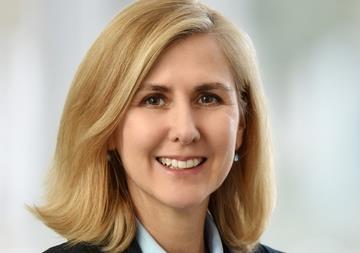Georg Inderst gives an overview of the effects of the sub-prime generated credit crunch on pension funds
The fire could not be contained: The credit crisis developed into an outright financial crisis. Some market segments came to a standstill while banks continued to announce massive write-offs. Estimates for losses relating to mortgage-backed securities have reached the figure of US$1trn (€625bn) as central banks inject hundreds of billions of liquidity into ailing money markets.
There have been some prominent blow-ups, and they often signal the peak of the crisis. This fuels the hope that liquidity conditions are normalising. However, there is little to cheer for pension funds since the real economy in the US and worldwide is becoming increasingly affected by the financial crisis. The BRIC and the commodity-producing countries are resilient but not immune.
The tightening credit conditions affect households and businesses harder the more debt-loaded they are. Not surprisingly, the US authorities have reacted most aggressively, not only by slashing interest rates from 5.25% to 2.25% within six months, but also with fiscal measures.
Other countries find it more difficult to follow. The euro-zone inflation rate of 3.5% is well above target. Almost paradoxically, a number of countries feel the need to raise interest rates rather than cutting them, including Australia, Poland, and China. Chinese food prices are officially up by a quarter. The price of rice has multiplied. Political repercussions of rising food and energy prices are being already felt in many countries.
Our old friend of the 1970s, stagflation, is back. How long will he stay?
Given the mixed global picture, little surprise that exchange rates adjust accordingly. With two-year government bonds yielding less than 1.5%, the US dollar has fallen to fresh lows below 100 against the yen and 1.5 against the euro.
Effects on pension funds
Although the spotlight is still more on investment banks than on pension funds, the latter may not stay out of trouble for too long. Most European pension funds were initially relieved last year when they found out that the immediate impact of the sub-prime crisis was negligible. In many cases, this was probably more by default than design. Notoriously slow-moving pension boards were just too ‘conservative’ or ‘uneducated’ to invest in AAA-rated vehicles that promised a free lunch.
The widening credit spreads even reduced the valuation of liabilities of pension plans, a rather perverse beneficial effect of the sub-prime crisis on the funding position of pension funds. However, the relief did not last for very long. Corporate bonds and other asset classes started to feel the strain. The big blow has come this year from sharply falling stock markets as earnings expectations are being scaled back in the face of the global economic slowdown. The strength of the euro adds to the pain.
The impact of financial turmoil is less uniform in the alternative investment space, often facing the first real test in the context of pension fund assets.
The valuations of property portfolios are traditionally adjusting slowly but trustees will not have much good news to expect this year. In contrast, with oil over $100 and gold at $1,000, commodity investments have been the best diversifier, at least so far. Life has become much more difficult in the private equity world, and for many pension boards this will be the first big test of the quality of their managers and investments. Investment officers will look out for (positive and negative) surprises with hedge funds, absolute return, portable alpha and overlay strategies, where fund managers have the opportunity to play the short side of the trade as well.
Risk management revisited
The current crisis constitutes not only a tough test for the asset allocation process of pension plans but also their risk controls. Modern risk management techniques reached the pensions world relatively late. Concepts have typically been borrowed from other sectors, like fund management (eg tracking error), insurance (eg liability-matching) and banking (eg value-at-risk, stress-testing).
However, the experiences have been bumpy. Every time poor trustees are given a new holy grail for managing risk, it turns out to be less than perfect, if not outright counterproductive. Lessons were learnt the hard way. Managing relative risk against market indices gave little help when markets fell. The use of modern asset-liability-models did not necessarily protect them from building up (often massive) funding deficits.
Assumptions that make assets and liabilities match in the model rarely bear out in the real world. Stochastic simulation techniques fail in the case of extreme events, and these seem to be appearing more frequently. Furthermore, in the absence of liquidity, or a working market at all, the fuses of the risk machine blow up.
Quantitative risk management techniques, as they are applied in the financial industry, have in recent years been increasingly called into question by academics. Now, given the massive failures in the current crisis, they have been widely discredited also in practice. They miss an important factor, ie endogenous risk. As Jon Danielsson of LSE puts it, “market participants react to the measurements and therefore change the underlying statistical processes”. In other words, you are protecting yourself against yesterday’s risk.
Curiously, pension plans are still being pushed into strict uses of risk models from all sides, not the least by their own regulators, supervisors or accounting boards. The current financial crisis has already spurred a lively debate about risk management and regulation of banks. It is going as far as putting ‘mark-to-market’ valuation into question!
Lessons from the financial regulation debate
Such discussions usually swap over to the world of pensions with some delay. Of course, not everything required for banks and insurance companies applies to pension funds, such as short-term liquidity needs. Nonetheless, there are already interesting insights emerging from the recent financial regulation and risk management debate, some of which may be usefully applied to pension funds:
Understand your investments. As it turns out now, products sold to investors were often not even understood by investment banks themselves. Complexity is no guarantee for quality. Apart from cost and transparency issues, overly complex products may produce surprising results in changing market conditions. The diversification fallacy. Economies and markets change. Correlations between asset classes can quickly jump, and this makes models built on past data suddenly redundant. Watch the other lemmings! Leverage - a double-edged sword. A wonderful mechanism for making big returns out of small ones as long as it goes. Pushed to the extreme, tiny changes can suddenly have enormous effects. Quantitative models: not to be used in isolation. Understand their assumptions and limitations. Do not induce false certainties on the part of your board. Independent risk control. Is there an independent but still integrated and fast-moving risk unit within the institution? Good governance. The best risk control starts with good line management from the top.
Pro-cyclical regulation or pro-cyclical investors?
There is final lesson drawn by the experts from the banking world: pro-cyclical regulation generates vicious cycles. The more institutions are being forced into doing the similar things, the higher the volatility on the markets. For markets to work well, both buyers and sellers are needed at any point of time.
Given the long-term horizon of liabilities, pension funds used to be able to pick up value investments at times of market sell-offs. To what extent does external regulation stop them acting in a contrary way now? Or have pensions funds just lost the guts to swim against the tide?
In terms of the fiduciary risk, perversely, it was probably easier for trustees to buy credit exposure at much higher prices a year ago than now. In the face of all the current gloom, the current crisis surely offers some good long-term investment opportunities already.
Georg Inderst is an independent adviser












No comments yet